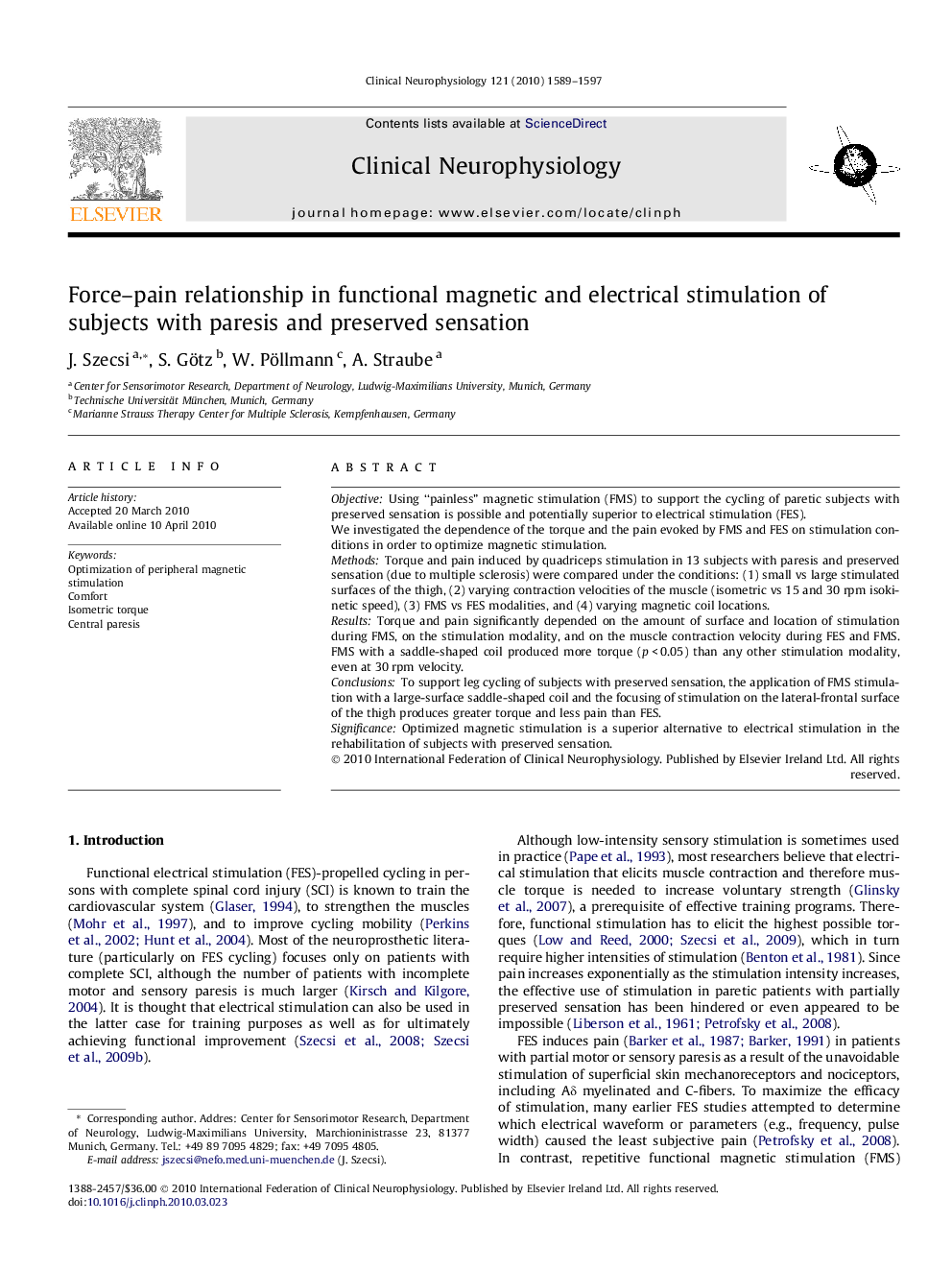| Article ID | Journal | Published Year | Pages | File Type |
|---|---|---|---|---|
| 3045607 | Clinical Neurophysiology | 2010 | 9 Pages |
ObjectiveUsing “painless” magnetic stimulation (FMS) to support the cycling of paretic subjects with preserved sensation is possible and potentially superior to electrical stimulation (FES).We investigated the dependence of the torque and the pain evoked by FMS and FES on stimulation conditions in order to optimize magnetic stimulation.MethodsTorque and pain induced by quadriceps stimulation in 13 subjects with paresis and preserved sensation (due to multiple sclerosis) were compared under the conditions: (1) small vs large stimulated surfaces of the thigh, (2) varying contraction velocities of the muscle (isometric vs 15 and 30 rpm isokinetic speed), (3) FMS vs FES modalities, and (4) varying magnetic coil locations.ResultsTorque and pain significantly depended on the amount of surface and location of stimulation during FMS, on the stimulation modality, and on the muscle contraction velocity during FES and FMS. FMS with a saddle-shaped coil produced more torque (p < 0.05) than any other stimulation modality, even at 30 rpm velocity.ConclusionsTo support leg cycling of subjects with preserved sensation, the application of FMS stimulation with a large-surface saddle-shaped coil and the focusing of stimulation on the lateral-frontal surface of the thigh produces greater torque and less pain than FES.SignificanceOptimized magnetic stimulation is a superior alternative to electrical stimulation in the rehabilitation of subjects with preserved sensation.
